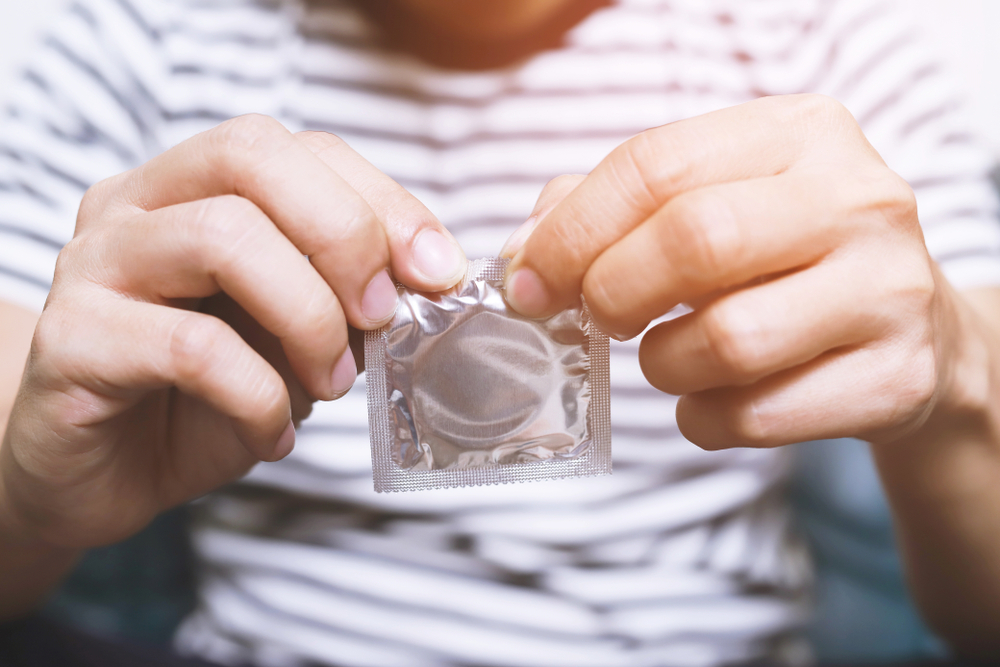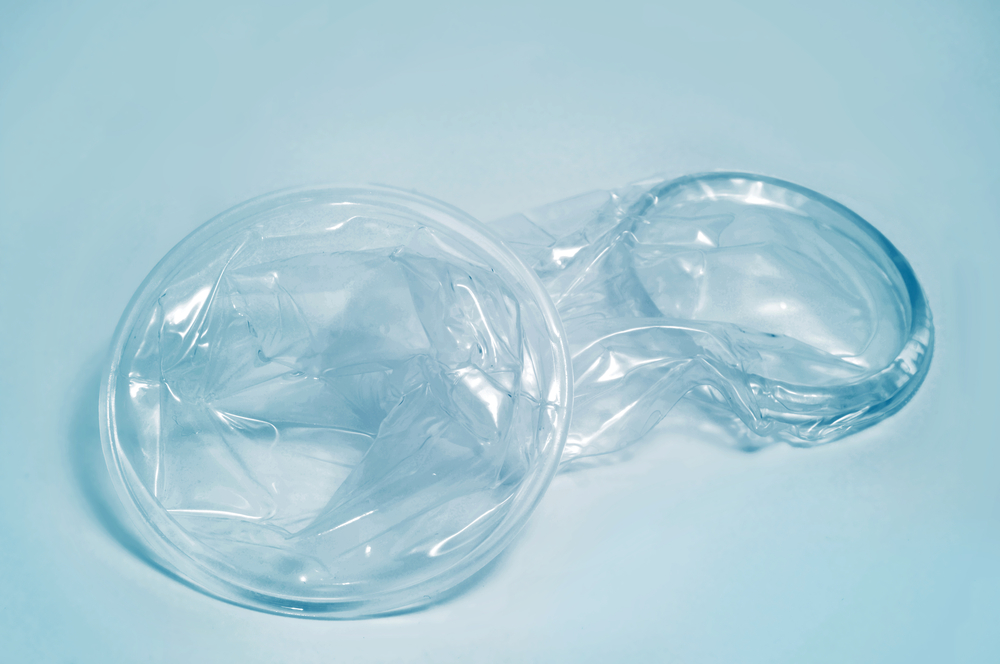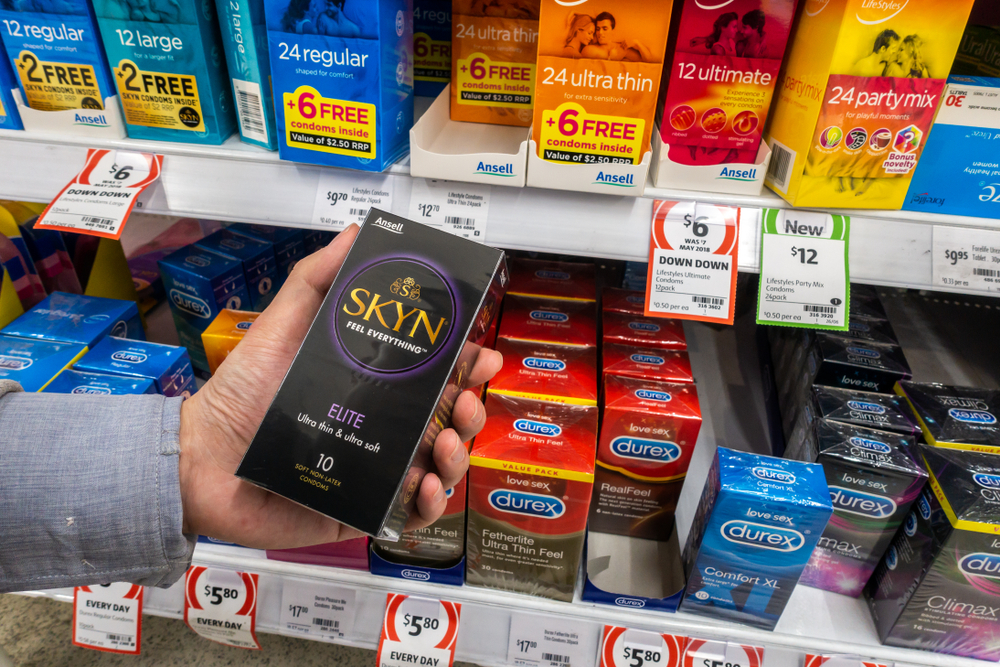Why the condom is one of the best methods of protection against unplanned pregnancy and sexually transmitted infections

As a nation of sexually active men, we owe huge thanks to condoms for not only preventing pregnancy but also reducing the risk of contracting sexually transmitted infections (STIs), including human immunodeficiency virus (HIV) and viral hepatitis.
Available at every convenience store in Australia, and for less than $10 for a packet of enough frangers to get you through a week, it’s safe to say that the humble condom ticks the boxes of accessibility, affordability, and convenience for Aussie men.
But, how does the condom rate in reliability? Exactly how effective are condoms, really?
It’s time to take a closer look at the efficacy of male and female condoms.

But first, let’s clear up the basics – what is a condom?
A sexual health invention that needs little introduction, the condom is a barrier method of birth control that can prevent semen from entering the vagina where it would normally commence its journey to find and implant an egg in a parallel life of unprotected sex.
Condoms can be used for any type of sexual skin-to-skin contact where the penis is likely to enter another person’s body, such as vaginal sex, anal sex, and anal sex. A condom worn during a romp can also provide a decent level of protection against some sexually transmitted infections.
There are two types of condoms: male and female.
The male condom
Also known as an external condom, the male condom is a thin, flexible pouch worn over the penis during sexual intercourse. External condoms are most commonly made from latex, however, lambskin condoms serve the purpose of protection for men who may have an allergy to latex.
The right way to use male condoms correctly
To use a condom correctly to prevent unplanned pregnancy and reduce the risk of contracting a sexually transmitted infection, follow these steps on how to use a condom.
Step 1: Check the expiry date to ensure condom effectiveness is maintained.
Step 2: Carefully tear open the condom wrapper and remove the condom.
Step 3: Place the condom on the head of the erect penis. If the penis is uncircumcised, make sure to pull back the foreskin first.
Step 4: Squeeze the excess air out of the tip of the condom.
Step 5: Gently unroll the condom until the outer ring has reached the base of the penis.
Step 6: Continue to safely engage in sexual activity with all the protection a condom provides.
Step 7: After sex, and before pulling out, hold the base of the condom and gently remove the penis while holding the condom in place.
Step 8: Carefully remove the condom, making sure to contain all its contents, and dispose of the condom in the bin (no flushing down the toilet).

Male condom dos
If the condom is your preferred form of birth control, ensure you:
-
DO use a condom every time you have sex
-
DO put a condom on before having sex, rather than mid-way through
-
DO familiarise yourself with the packaging and instructions for use
-
DO check the expiration date
-
DO make sure there are no tears or defects
-
DO use latex condoms or polyurethane condoms, unless you have a latex allergy
-
DO use water-based lubricant or silicone-based lubricant to ensure there’s enough lubrication to prevent breakage
-
DO dispose of used condoms in the bin
Male condom don’ts
If the condom is your preferred method of birth control, ensure you:
-
DON’T store condoms in your wallet or pockets as heat and friction can cause damage
-
DON’T use oil-based lubricant products as they can cause breakage
-
DON’T double-up by wearing more than one at a time
-
DON’T reuse a condom
-
DON’T use an expired condom
-
DON’T dispose of condoms or wrappers down the toilet as they may clog the drain
How effective are male condoms?
When tossing up different contraception methods, it’s important to know how effective are condoms, really? It’s a great question, with a great answer. Because, when you use condoms perfectly, you’re guaranteeing yourself a 98% rate of pregnancy protection. With common use that allows for human error, this rate of efficacy falls back to 87%.
That equates to 13 out of every 100 women falling pregnant.

The female condom
Often referred to as an internal condom, or universal condom, the female condom is one of those birth control options that isn’t spoken about too often. It seems the male version scores a far better review in terms of functionality and usability. However, the internal condom does the same job.
Made from a synthetic, non-latex rubber called nitrile, the internal condom is a thin pouch with a flexible ring at each end. Once the internal condom is inserted into the vaginal cavity, it helps to stop pregnancy and protect against sexually transmitted infections by blocking the sperm from entering the vagina.
Find out more about how female condoms work.
The right way to use female condoms correctly
Internal condoms work a little differently from male condoms, in that they are inserted internally into the vagina. Typical use of a female condom involves the following steps:
Step 1: Carefully open the wrapper without using teeth or fingernails that could tear the condom inside.
Step 2: Insert the condom by squeezing the inner ring and gently placing it inside the vagina.
Step 3: Push the condom as far into the vagina as it will safely and comfortably go, making sure it isn’t twisted.
Step 4: To continue your sexual activity, guide the penis into the vagina, making sure it doesn’t glide into the space between the vaginal wall and the outer side of the condom. If the penis slips between this space at any stage, stop intercourse and realign the penis back into position.
Step 5: After sex, gently twist the outer ring and pull the condom out of the vagina.
Step 6: Dispose of the condom in the bin, not down the toilet.

Female condom dos
If you have a female partner and the internal condom is your contraception of choice, ensure you:
-
DO use a condom from the beginning to the end of every time you have vaginal sex
-
DO familiarise yourself with the packaging and instructions for use
-
DO make sure there are no tears or defects
-
DO use lubricant to help prevent slipping and tearing
-
DO store condoms in a cool, dry place
-
DO dispose of condoms in the bin
Female condom don’ts
If you have a female partner and the internal condom is your contraception of choice, ensure you:
-
DON’T use an external condom at the same time as using an internal condom
-
DON’T reuse condoms
-
DON’T flush condoms down the toilet as they may clog the drain

How effective are female condoms?
Condom effectiveness of the internal condom comes down to how perfectly it’s being used. When used perfectly 100-percent of the time, internal condoms are 95% effective. However, the common-use efficacy of the internal condom sits at about 79%.
That means that 21 out of 100 people may fall pregnant with common use.
Where to get condoms
You’ll find that condoms are widely available these days. You can buy them from pharmacies, grocery stores, petrol stations, and even restroom vending machines at some venues. Free condoms can also be sourced from medical and family planning centres Australia-wide.

10 Common condom mistakes that can significantly increase the chances of pregnancy
1. Using a condom that doesn’t fit properly
Using a condom that is too big can increase the chance of the condom falling off the penis when it’s inside the vagina, thus increasing the potential for semen to enter the vagina and cause pregnancy. There’s no shame in buying the correctly sized pack of condoms, even if it may seem smaller than the size your mates are buying. If you’re worried about this, try buying your condoms online, rather than from an in-person store.
2. Using a condom that’s been stored in your wallet or the pocket of your jeans
When you use condoms that have spent time in your wallet or jeans, there’s a chance they could be damaged by heat. We get that it’s a convenient way to always have a franger on hand, but if you want to safeguard your future and plan a family on your terms, always store your condoms correctly in a location that won’t experience extreme temperatures (e.g. in a bathroom drawer or bedside table).
3. Using an expired condom
The expiry date doesn’t exist for the sake of branding. It’s there because some condoms contain spermicides or other ingredients that break down over time, reducing the condom’s efficacy. Always check the date on the wrapper before usage.
4. Using two condoms for “extra protection”
When you use two condoms with the theory of double protection at play, it turns out you could be doing the opposite and reducing your level of protection. Wearing two condoms can increase the risk of breakage, especially if you engage in consented rough play.
5. Not using enough lube
As a rule of thumb, always apply lube liberally. In fact, the more lube, the better. This will help to prevent any friction-related condom tears.
6. Settling in for post-coitus cuddles with your penis still inside your partner
We know you want your sex and your post-cuddles, too. However, when you’re lying around with your penis still inside your partner after sex, there’s a chance the semen could flow out from the inside of the condom and into the vagina. Make removing a condom part of your post-sex repertoire. The cuddles can wait a few minutes.
Other forms of birth control
Unless you and your partner are trying to start a family, unprotected sex should be avoided. But, like all things in life, condoms have their lists of advantages and disadvantages. So, if they’re not the ideal contraception solution for you, here’s your reminder that condoms aren’t the only form of birth control method available in Australia.
Other birth control options include:
Birth control pills
Birth control pills are a form of oral contraceptive taken daily by a woman. They work by releasing hormones that stop sperm from joining an egg for fertilisation. Currently, there is no birth control pill available for men worldwide, so this is an option that should openly be discussed with your partner.

Emergency contraception
Commonly known as the morning-after pill, emergency contraception serves the purpose of preventing unplanned pregnancy in situations when contraception may have been compromised. For example, when a condom breaks, or contraception isn’t used due to unexpected circumstances or excessive alcohol consumption (we’re not judging here).
Also, keep in mind that no type of birth control prevents pregnancy or sexually transmitted diseases (STDs) 100% of the time. So, it’s nice to know about emergency contraception for those times when you aren’t quite sure if semen entered a woman’s body, or you were too intoxicated to remember.
Hot tip: keep Youly on standby for Australia’s reliable morning-after pill delivery service.
Implants, injections, and intrauterine devices
Implants, injections and intrauterine devices are long-term birth control options that work by releasing hormones into a woman’s body to prevent pregnancy. Long-term acting contraceptives (LARCs) can provide effective contraception for anywhere between 12 weeks and 10 years. Again, these options must be mutually decided upon with your partner.
The withdrawal or pull-out method
The pull-out method, also known as coitus interruptus, is a form of birth control that involves removing the penis from your partner prior to ejaculation. The aim is to prevent sperm from entering the vagina and reaching an egg for implantation. According to the World Health Organisation (WHO), the pull-out method is about as effective as condoms, however, when you account for human error, this method isn’t super reliable and we recommend always using a backup option.
Everything you need to know about the pull-out method.

Let’s get your health sorted!
Organise your ED and PE meds online with Stagger for fast, convenient and discreet delivery to your door.
